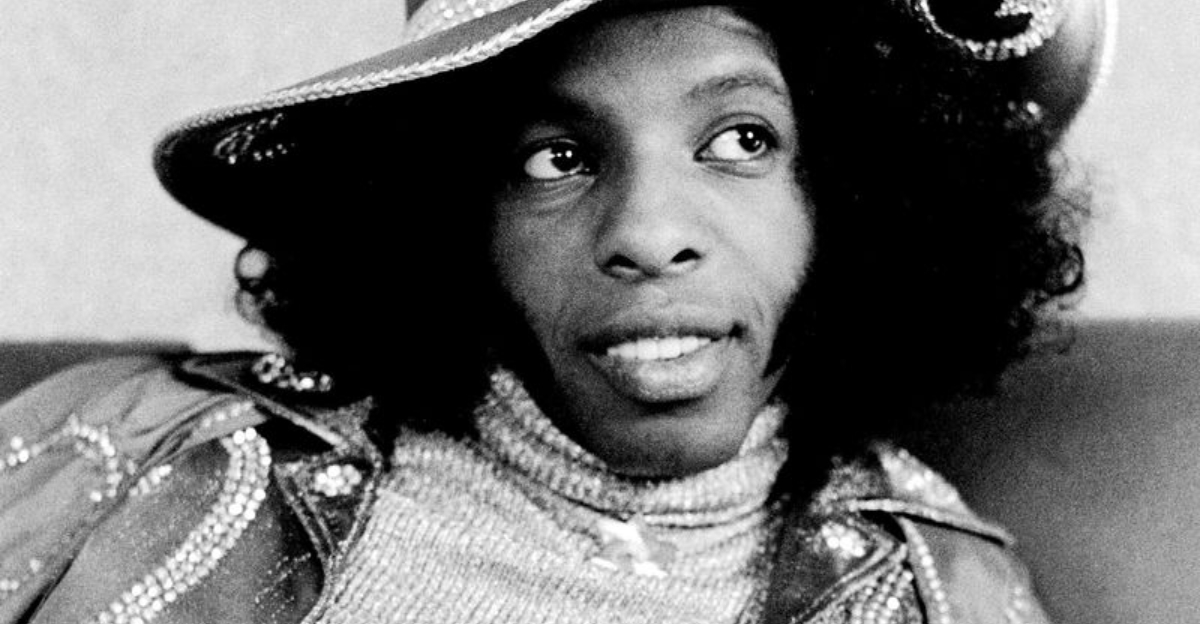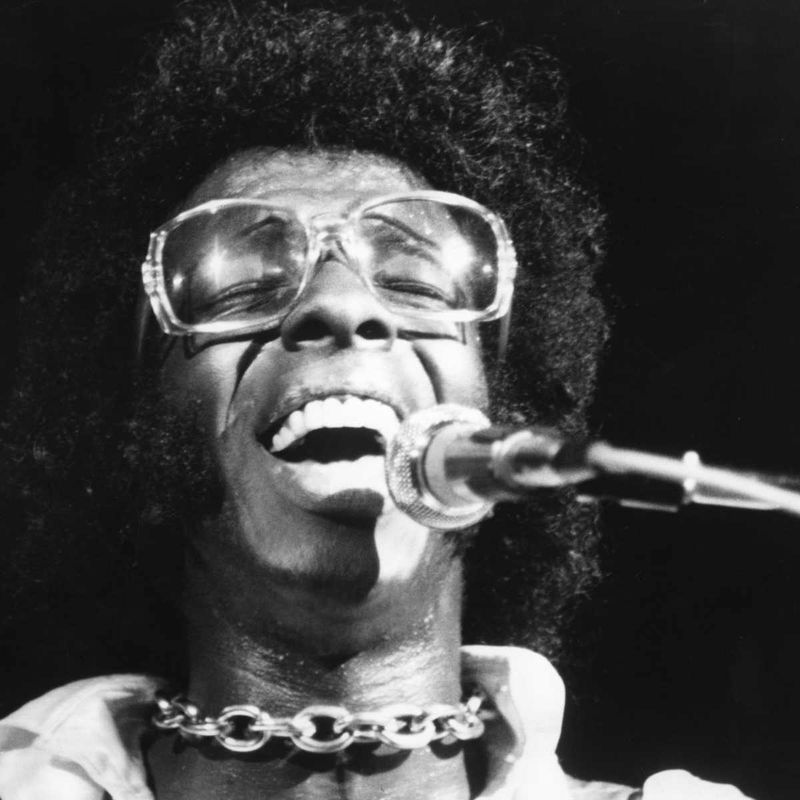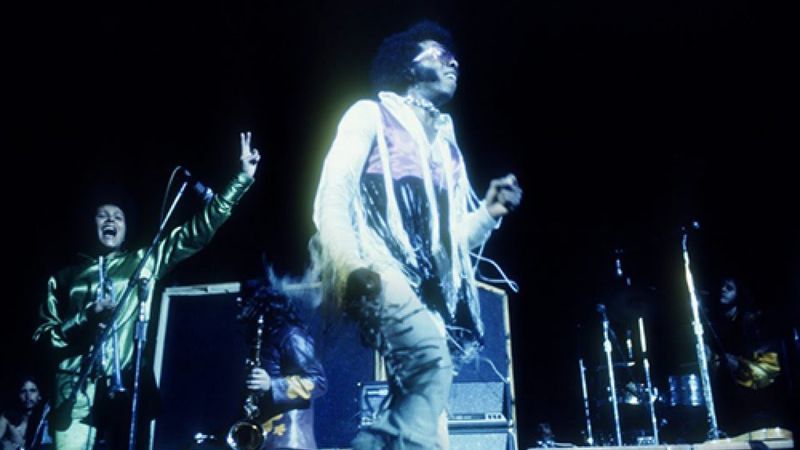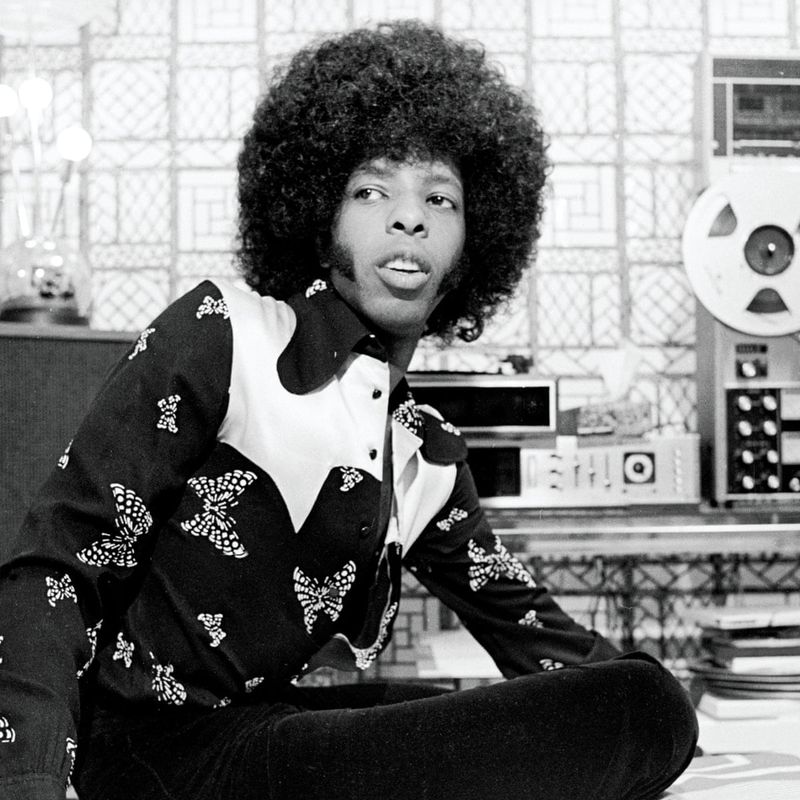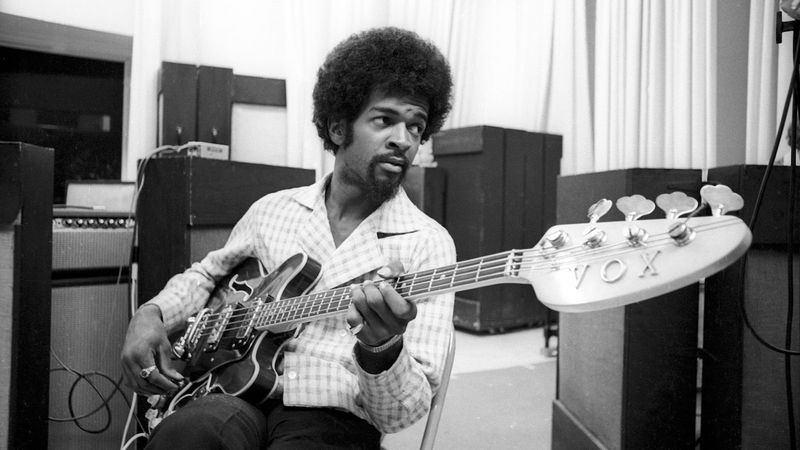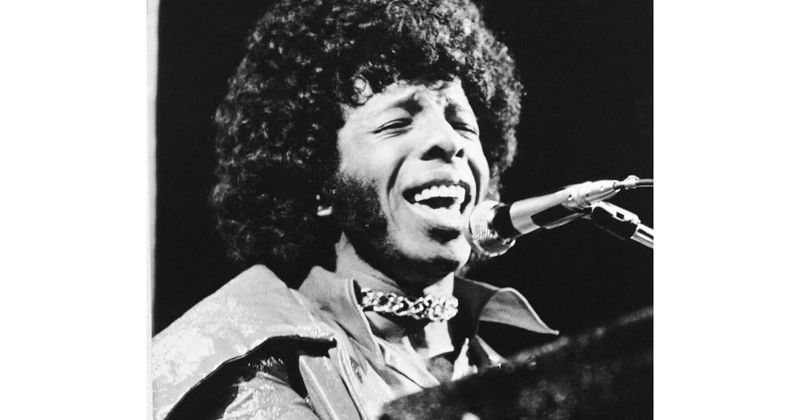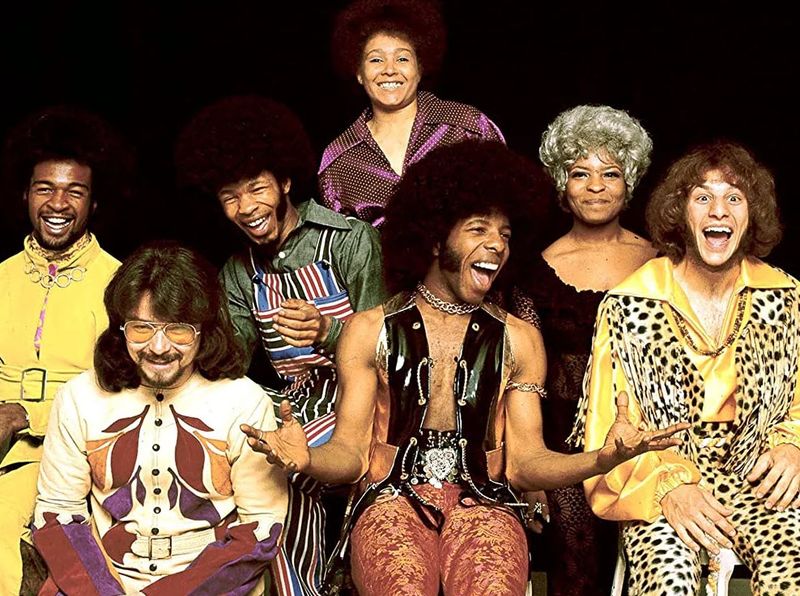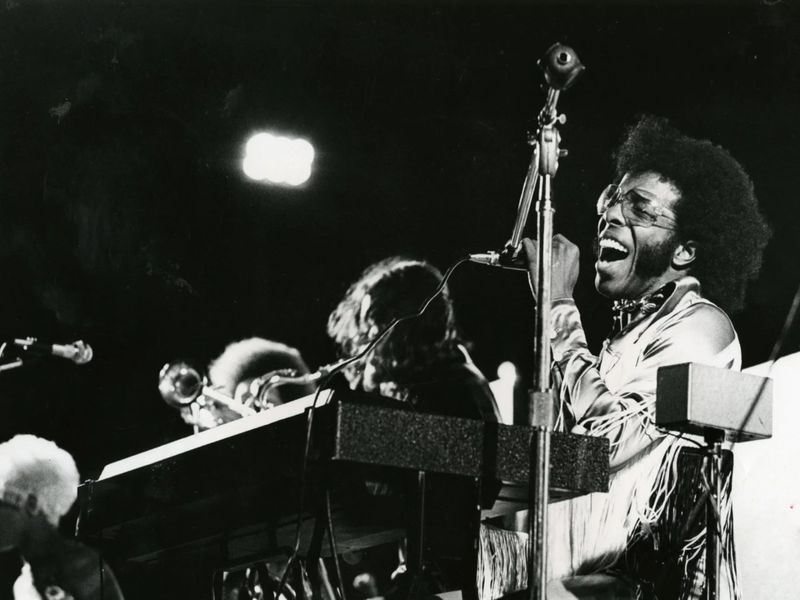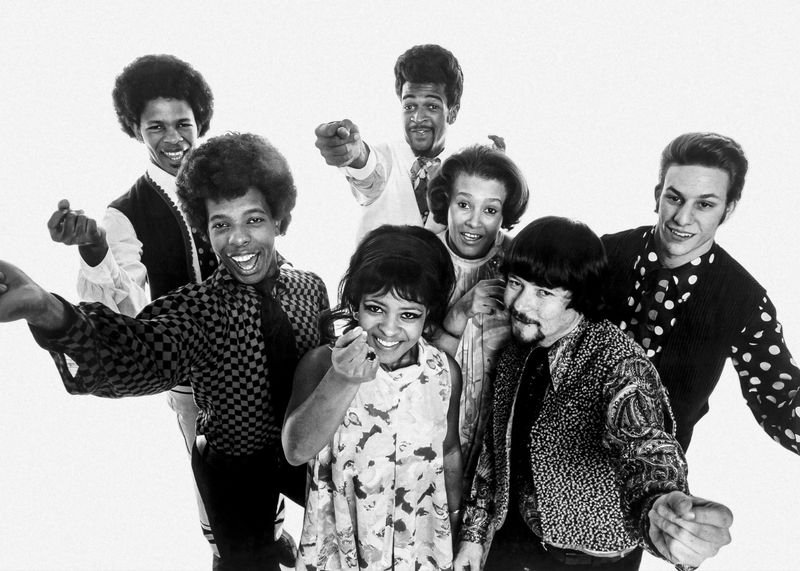In the colorful tapestry of music history, few threads shine as brightly as Sly Stone’s. This musical genius took the 1960s and 70s by storm, forever changing how we think about funk, soul, and rock.
His band, Sly and the Family Stone, wasn’t just making catchy tunes – they were breaking barriers and creating sounds nobody had heard before.
1. Pioneered the Funk-Rock Fusion
Before Sly came along, funk and rock existed in separate musical universes. His revolutionary approach married heavy guitar riffs with deep, syncopated funk rhythms, creating an entirely new sound landscape.
Albums like “Stand!” showcased this groundbreaking fusion, inspiring generations of musicians to blur genre lines. Artists from Prince to Red Hot Chili Peppers owe their musical DNA to this innovation.
The genius was in how natural this combination felt – as if these styles were always meant to dance together, waiting for someone bold enough to introduce them.
2. Formed the First Fully Integrated Major Band
Musical segregation was the norm until Sly Stone shattered it. His band featured Black and white musicians, men and women playing together – a revolutionary statement during the civil rights era.
Trumpeter Cynthia Robinson stood shoulder-to-shoulder with saxophonist Jerry Martini. Larry Graham’s bass grooves complemented Greg Errico’s drumming. This visual representation of harmony wasn’t just for show.
The Family Stone’s very existence challenged America’s racial and gender divisions, proving that music could transcend society’s deepest divides while creating something beautiful in the process.
3. Revolutionized Live Festival Performances
The summer of ’69 witnessed something extraordinary when Sly and the Family Stone took the Woodstock stage at 3:30 AM. Rain-soaked and exhausted, the crowd suddenly found new energy as the band unleashed their magnetic performance.
Unlike the folk acts that dominated festivals, Sly brought explosive choreography, call-and-response techniques, and boundless energy that transformed passive listeners into active participants. Their set remains one of the festival’s defining moments.
This blueprint – combining visual spectacle with musical virtuosity – forever changed how funk bands approached festival stages, elevating the genre to headliner status.
4. Introduced a Politically Conscious Voice to Pop Music
While many artists of the era kept politics at arm’s length, Sly boldly wove social commentary into irresistible hooks and grooves. Songs like “Everyday People” and “Stand!” didn’t just top charts – they challenged listeners to confront America’s racial divide.
His genius lay in making protest danceable. The message of unity in “Everyday People” was delivered with such infectious rhythm that segregated radio stations couldn’t resist playing it, bringing his vision of harmony to divided audiences.
This formula – wrapping revolutionary ideas in radio-friendly packages – created a template for conscious pop that artists still follow today.
5. Advanced the Use of Drum Machines in Studio Recording
The murky, hypnotic rhythms on “There’s a Riot Goin’ On” weren’t created by a traditional drummer. Sly’s innovative use of the Maestro Rhythm King drum machine in 1971 was revolutionary for mainstream music.
While primitive by today’s standards, this early drum machine allowed him to craft dense, repetitive patterns that perfectly captured the album’s paranoid atmosphere. The mechanical yet funky beats on tracks like “Family Affair” signaled a dramatic shift in production techniques.
This bold experimentation paved the way for the electronic rhythms that would later dominate funk, hip-hop, and dance music for decades to come.
6. Popularized Layered, Studio-Built Soundscapes
Traditional recording meant capturing a band playing together in real-time. Sly flipped this approach upside down, pioneering a new production philosophy where the studio itself became an instrument.
On groundbreaking albums like “There’s a Riot Goin’ On,” he meticulously constructed songs layer by layer, overdubbing instruments and vocals until achieving dense, psychedelic soundscapes impossible to recreate live. This revolutionary technique allowed for unprecedented sonic experimentation.
Modern producers from Dr. Dre to Tame Impala’s Kevin Parker follow this studio-as-canvas approach that Sly helped establish, treating recorded music as sculptural rather than documentary.
7. Elevated Funk from Clubs to Stadiums
Funk music originally thrived in intimate clubs and small theaters. Sly’s vision extended far beyond these confined spaces – he saw funk’s potential to fill massive venues just like rock bands did.
Through tight arrangements, anthemic choruses, and spectacular stage presence, the Family Stone proved funk could command stadium-sized audiences. Their performances featured call-and-response segments that worked brilliantly with thousands of voices joining in.
This stadium-ready approach influenced everyone from Earth, Wind & Fire to Bruno Mars, establishing funk as arena-worthy music rather than just club fare. The genre’s commercial ceiling was forever raised.
8. Pioneered Conscious Psychedelic Soul
The late 1960s saw psychedelic music flourish, but it was largely disconnected from social reality. Sly’s genius was merging mind-expanding sonics with grounded social commentary, creating a new genre: conscious psychedelic soul.
Songs like “Thank You (Falettinme Be Mice Elf Agin)” wrapped awareness-raising lyrics in trippy, effect-laden arrangements. The wah-wah pedals and phased vocals weren’t just sonic decoration – they enhanced the message by creating a disorienting experience that mirrored America’s social turbulence.
This marriage of psychedelia with social consciousness influenced countless artists from Childish Gambino to Kendrick Lamar.
9. Defined the Slap Bass Era
That distinctive popping, thumping bass sound that defines funk? We can thank Sly and bassist Larry Graham for revolutionizing how the instrument is played.
Born from necessity when Graham needed to compensate for the lack of a drummer during early gigs, his “thumping and plucking” technique created percussive basslines that functioned as both rhythm and melody. Songs like “Thank You (Falettinme Be Mice Elf Agin)” showcase this groundbreaking approach.
This innovation became funk’s backbone, influencing bassists from Bootsy Collins to Flea, and later forming the foundation for entire genres like slap-heavy 80s funk and modern bass-driven R&B.
10. Sparked a New Era of Artist Autonomy
Record labels typically controlled every aspect of an artist’s output before Sly changed the game. His insistence on creative independence was revolutionary in an era when artists were treated as products rather than creators.
By demanding production control and artistic freedom, he secured unprecedented power over his music. “There’s a Riot Goin’ On” was created entirely on his terms – a rarity for Black artists in the early 1970s.
This bold stance opened doors for future generations of musicians to claim ownership of their art. Prince, who later fought Warner Bros. for creative control, directly cited Sly’s example as inspiration for his own battles.
11. Changed the Sound of Horn Sections in Pop Music
Horn sections in pre-Sly pop music typically provided smooth, melodic accompaniment. The Family Stone’s brass attack was something entirely different – punchy, staccato, and functioning almost like percussion instruments.
Cynthia Robinson’s trumpet and Jerry Martini’s saxophone delivered short, rhythmic bursts that punctuated songs rather than flowing over them. This revolutionary approach turned horn arrangements into funky exclamation points within the music.
The influence spread everywhere – from Earth, Wind & Fire to Tower of Power, and even to rock bands like Chicago. Modern pop from Bruno Mars to Beyoncé still employs this rhythmic horn approach pioneered by Sly.
12. Helped Normalize Genre Fluidity
Musical boundaries were rigid before Sly came along. Artists typically stayed in their designated lanes – soul singers didn’t venture into rock territory, and rock bands rarely incorporated funk elements.
The Family Stone gleefully ignored these artificial divides. Their music seamlessly blended gospel-tinged vocals, rock guitar solos, jazz-influenced horn arrangements, and funk rhythms – often within the same song. This fluid approach treated genres as colors on a palette rather than separate categories.
Today’s genre-defying artists like Anderson .Paak and Thundercat continue this tradition of musical border-crossing that Sly helped normalize half a century ago.
13. Wrote Anthems of Empowerment and Inclusion
“Everyday People” wasn’t just a #1 hit – it was a radical statement of unity wrapped in an irresistible melody. The song’s message that “different strokes for different folks” still make us one family was revolutionary during America’s turbulent late 1960s.
Sly crafted anthems that celebrated diversity while emphasizing our common humanity. “Stand!” urged listeners to stand up for their beliefs, while “You Can Make It If You Try” offered encouragement to marginalized communities.
These songs created a template for empowerment anthems that artists from Michael Jackson to Beyoncé would later adopt – music that uplifts while acknowledging social realities.
14. Inspired Future Supergroups and Funk Collectives
The Family Stone’s organizational structure was as revolutionary as their music. Rather than following the typical frontman-and-backing-band model, they operated as a true collective where multiple members shared vocal duties and creative input.
This democratic approach influenced how future funk groups organized themselves. Parliament-Funkadelic adopted a similar collective structure, as did Earth, Wind & Fire and later groups like The Roots.
Even modern collaborative projects like Silk Sonic (Bruno Mars and Anderson .Paak) draw from this template – the idea that a band can feature multiple strong personalities who share the spotlight rather than compete for it.
15. Left a Legacy That Transcends Generations
Fifty years after their heyday, Sly’s musical DNA remains embedded in contemporary sounds. Hip-hop producers have sampled his work thousands of times, with tracks like “Family Affair” becoming the foundation for hits by artists from Kanye West to A Tribe Called Quest.
Modern funk revivalists like Vulfpeck and Lettuce cite Sly as a primary influence. Even pop stars like Bruno Mars channel the Family Stone’s energy and inclusive messaging in songs like “Uptown Funk.”
Beyond specific songs, his approach to groove, social commentary, and genre-blending continues to provide a blueprint for artists seeking to make music that’s both meaningful and danceable.
